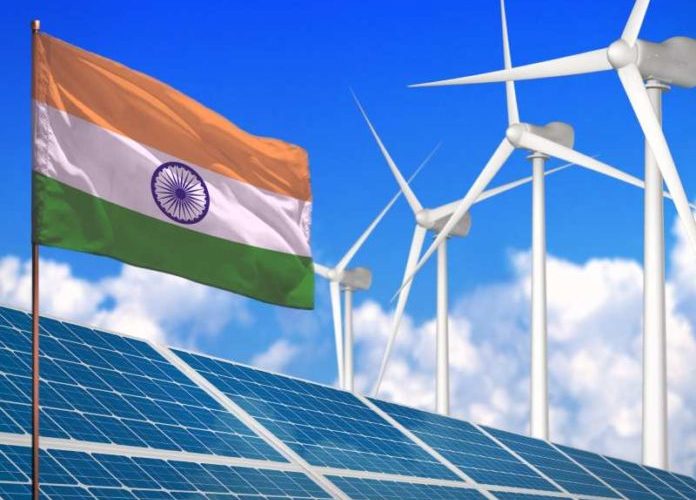By Mr Satish Talmale, Chief Operating Officer at Indian power sector infrastructure investment trust IndiGrid.
The world is looking at an active energy transition to achieve net-zero carbon emissions with an efficient energy mix between fossil and non-fossil energy generating sources towards achieving sustainable, affordable, and resilient energy consumption.
In the last decade, solar power generation has taken great leaps in terms of generating power at a very competitive cost on the back of technological advancements. This, coupled with creative business models and regulatory policies, has led to the advent of renewables as the future mainstay of energy generation.
Have you read?
India’s smart meter rollout – 250 million meters by 2025
Strategies to engage Indian SMEs in green hydrogen
India’s e-mobility era has begun
India has also taken initiative for an ambitious national hydrogen mission and energy storage systems in order to decouple its emissions from economic growth. Overall India’s story on achieving such phenomenal growth in the energy transition is truly inspirational, however, to keep such growth trajectory on track, especially considering post-COVID pandemic impact, needs a much sharper focus and execution strategy.
Our pursuit of the energy transition is strongly integrated with the advancement of technology (e.g steam to diesel and now to EV) led by progressive digital transformative initiatives, which will offer accelerated development in the way equipment is designed, manufactured, and maintained. For instance, in the case of solar and wind power generation, it is the smart grid technologies that have made it possible to supply reliable power at an affordable cost and reduce greenhouse emissions. Smart grids, artificial intelligence, internet of things are just some of the disruptive innovations helping faster energy transition. Disruptive technology solutions, however, need to have an integrated interface between old and new technologies to make them affordable and sustainable.
However, amongst all the positive outlooks, when it comes to execution on the ground for such highly accelerated energy transition initiatives, the effectiveness of implementation and driving operational efficiencies is a pertinent challenge. One of the paramount factors which is becoming increasingly evident is that the human capital involved in execution hasn’t yet fully adapted to such transition.
In the conventional energy context, it took several decades to arrive at the right level of competencies to execute projects and drive operational efficiencies. Thus, in the case of renewable energy and smart grids, the pertinent question is – Do we have enough time and right focus especially when India is looking at our aspiration of 450GW by 2030? During the pandemic, the virtual world restricted the development of core skill sets that people need on the ground to construct and maintain the projects.
Have you read?
The energy transition in India’s power sector
Why is a ‘just transition’ so important for India?
India – the energy storage revolution
This has led to a change in the mindset of the human resources that the most coveted skills in the industry have migrated physically and emotionally towards doing things that don’t involve the core skills sets which are required for the execution of such projects. Consequently, the quality of work (with the additional pressure on cost efficiency) is visibly deteriorating especially in a post-pandemic world.
There is a severe shortage of human capital with the right skills sets in the country and the efforts to build that are somehow not happening at a pace at which disruptive technologies are being actioned. Especially in wind, solar, transmission, and distribution the quality of workforce available in the country needs a dramatic shift and should be hand in hand with the evolving technologies and advancements. Starting from the education ecosystem to the vocational skills development centres – the curriculum needs to come up with humongous efforts to create a digitally savvy skilled workforce to prepare for new ways of doing work.
IndiGrid is India’s first power sector investment infrastructure platform under the InvIT model with approximately $2.8 billion AUM and we are proud to lead the way by creating a successful yield platform for the sector. IndiGrid’s key purpose is to provide reliable power and to unlock the value of its assets for its stakeholders. In the past four years, we have created a strong asset portfolio, including 13 transmission assets and one recently acquired solar asset. IndiGrid has also drawn up a digital transformation roadmap focused on digitising all its operational activities as well as developing skill sets. We have partnered with our strategic technology partners to help us implement our digital roadmap and create reliable and resilient asset management practices in the sector.
The digital framework has been built around people and operating processes, keeping in mind that it is the last mile person who ultimately ensures the reliability of the assets. The engagement of last-mile people in designing the architecture of the entire digital platform has made an immense change in the way the assets will be managed.
In conclusion, while the world has dramatically adopted the path of energy transition in the last few years with various innovations and technology improvements making it possible to improve the affordability of energy consumption, extraordinary efforts are required to make the workforce ready for managing the energy transition with disruptive technologies to ensure the sustainability of such a mammoth shift.
About the author

Mr Satish Talmale has over two decades of experience largely in the power sector and is currently the Chief Operating Officer at India Grid Trust (IndiGrid), where he is responsible for asset management of INR 21,000 crores worth of power transmission assets spanning across 17 states and 1 Union Territory, as well as 100MW solar power generation plant. Prior to this, he was the Director-Services at Ingersoll Rand. In the past, he has worked with GE Power, BHEL-GE and Larsen & Toubro in various capacities, largely in gas-based power generation and renewable energy. Throughout his career, he has been actively involved in establishing and implementing best-in-class reliability-centred asset management practices, inculcating a problem-solving culture and building highly collaborative teams with the right ethos. He has been instrumental in spearheading numerous critical improvement initiatives such as digitisation, operational excellence, continuous improvement and change management.


